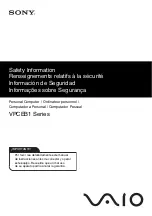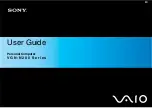
88
ATmega8535(L)
2502K–AVR–10/06
Each half period of the external clock applied must be longer than one system clock
cycle to ensure correct sampling. The external clock must be guaranteed to have less
than half the system clock frequency (f
ExtClk
< f
clk_I/O
/2) given a 50/50% duty cycle. Since
the edge detector uses sampling, the maximum frequency of an external clock it can
detect is half the sampling frequency (Nyquist sampling theorem). However, due to vari-
ation of the system clock frequency and duty cycle caused by Oscillator source (crystal,
resonator, and capacitors) tolerances, it is recommended that maximum frequency of an
external clock source is less than f
clk_I/O
/2.5.
An external clock source can not be prescaled.
Figure 39.
Prescaler for Timer/Counter0 and Timer/Counter1
Note:
1. The synchronization logic on the input pins (
T1/T0)
is shown in Figure 38.
Special Function IO Register –
SFIOR
• Bit 0 – PSR10: Prescaler Reset Timer/Counter1 and Timer/Counter0
When this bit is written to one, the Timer/Counter1 and Timer/Counter0 prescaler will be
reset. The bit will be cleared by hardware after the operation is performed. Writing a
zero to this bit will have no effect. Note that Timer/Counter1 and Timer/Counter0 share
the same prescaler and a reset of this prescaler will affect both timers. This bit will
always be read as zero.
PSR10
Clear
clk
T1
clk
T0
T1
T0
clk
I/O
Synchronization
Synchronization
Bit
7
6
5
4
3
2
1
0
ADTS2
ADTS1
ADTS0
–
ACME
PUD
PSR2
PSR10
SFIOR
Read/Write
R/W
R/W
R/W
R
R/W
R/W
R/W
R/W
Initial Value
0
0
0
0
0
0
0
0
Summary of Contents for ATmega8535
Page 314: ...314 ATmega8535 L 2502K AVR 10 06 ...
Page 320: ...vi ATmega8535 L 2502K AVR 10 06 ...
















































